
Category C – (Project run by an Individual – leading change for biodiversity at local level)
Scroll down the page to learn about the six projects shortlisted in this category

by Eoghan Daltun

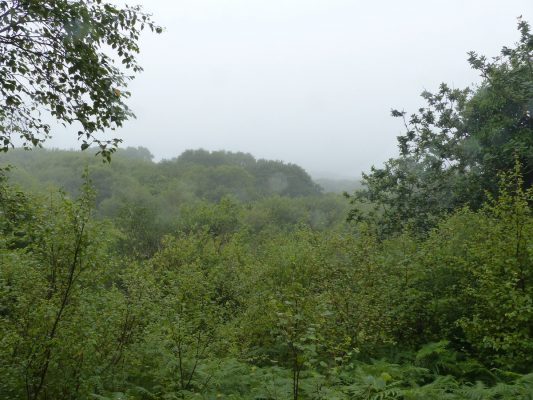

I bought a small farm in May 2009 near Eyeries on the Beara Peninsula, West Cork. The land – about 33 acres of private ground – had been disused for many decades, during which time most of it had naturally reverted to wild native woodland, older pockets of which would already have previously been present.
The woods are extremely biodiverse and, due to the very high rainfall/general humidity in the area, are characterised by a thick covering of epiphytic mosses, ferns, and other plants as well as lichens (the habitat is classed as temperate rainforest). Underneath the canopy, almost every surface of the very diverse rocky landscape – with sheer cliffs, gorges, etc. – is similarly carpeted in luxuriant growth.
However by 2009 there was widespread infestation by a variety of invasive non-native plant species – principally Rhododendron ponticum. Very severe overgrazing/browsing by non-native herbivores – sika deer, feral goats, sheep, and cattle, had also been a factor for at least a decade. These problems were combining to very seriously compromise the ecological health of the woodland.
I therefore began clearing the rhododendron and other invasive plant species by hand, both on my own land and, with owners’ permissions, on around 12 neighbouring properties, as otherwise these would continue to seed into my own area. In 2010 I had a 2m high deer fence erected around most of the land with a grant under the Native Woodland Scheme.
Since then I have continued to monitor for, and remove, rhododendron and other invasive plants on a regular basis, as new plants continue to appear throughout the area, albeit in ever fewer numbers every year. Frequent storms bring down trees or branches, damaging or even knocking sections of the deer fence, so I also make regular inspections of the perimeter and undertake any necessary repairs.
The positive biodiversity impact of the project
The prevention of overgrazing/browsing has allowed the extremely rich ground flora of the woods to return, and it has become clear based on high species diversity and other evidence that some parts of the woods are quite old. Springtime is now a wonder to behold, as profusions of wildflowers, including wood anemone, bluebell, lesser celandine, wood sorrel, bugle, herb Robert, and an enormous diversity of other species of flowering plants, carpet the woodland floor in a beautiful mosaic of colour, attracting myriad species of insects and, in turn, birdlife.
The survival of wild native tree seedlings is also leading to the formation of new woodland in the many areas of previously open ground. In many locations the creation of new woodland has advanced to the point that the new canopy has already closed in, at around 6-7m overhead.
All of the wild native tree/large woody shrub species present in the area are successfully self-seeding abundantly: sessile oak, downy birch, holly, ash, rowan, goat and grey willow, hawthorn, guelder rose, wild apple, blackthorn, hazel, and alder. I have also introduced some Arbutus unedo – grown from cuttings taken from local wild trees – and scots pine, which once formed a large component of the local woodlands, as evidenced by the many stumps revealed by turf-cutting in nearby bogs.
The structural diversity of the already existing woods has also increased hugely, giving rise to a corresponding greatly augmented variety of ecological niches. The land is continually increasing in biodiversity, as species of every category move in to take advantage of the new and richer, more complex habitats. Several rare and protected species are now quite common here, including lesser horseshoe bats, marsh fritillary, and Kerry slug (a few colonies of Killarney fern are also present).
by Feargal Ó Cuinneagáin
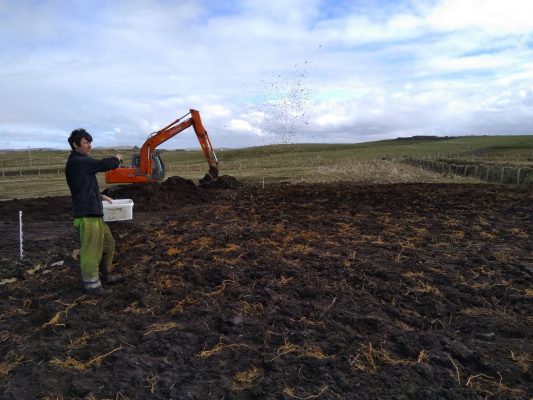
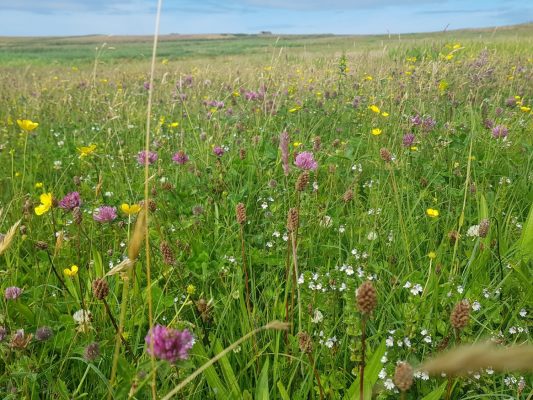

I purchased a small 25 acre farm (hay meadow and fen) in 2011. My main aim was that the farm be managed mainly for corncrake, twite, and great yellow bumblebees; and to help create species rich traditional hay meadows. The farm also produces a crop of silage for sale.
I approached NPWS in 2015 with a view to entering the NPWS Corncrake Farm Plan. This provided technical assistance and a grant to provide funding for habitat creation/management.
Corncrake require extensive early cover areas like nettles, iris, and hogweed, ideally on 10% of farm. Nettle beds are created by first harvesting nettle sods (0.5m X 0.5m) from a donor site. Nettles sods are then washed. Nettle sods (rhizomes) are then broken up and sowed on a prepared area of spent mushroom compost and rotted farmyard dung. 200 nettle sods create 150m of nettle bed. Nettle beds require continuous maintenance once planted. To date 0.7 acres of nettle bed have been created.
Also, 0.5 acres of mixed iris/hogweed beds have been created. Iris rhizomes were dug up from a Wicklow site. Iris rhizomes are then sowed in a rotovated area in a wet meadow. The drains in the field have been partially blocked to provide wet conditions for the iris. Hogweed seeds are collected, and planted in iris/nettle beds.
Fertilizer application on farm has been drastically reduced, guided by soil fertility testing, to help increase numbers of wild flowers and grasses. Nettle, iris, hogweed and field margins are fertilized to produce early growth for returning corncrake. Central areas of the fields are left unfertilized to increase plant biodiversity. Barnacle geese graze undisturbed the fertilized margins during winter. Yellow rattle has been sowed to decrease the amount of ryegrass present in fields. There is a fen on the farm which was overgrown with rank molinia grass that is now mowed annually. This has improved plant biodiversity such as ragged robin.
To help feed twite, skylarks, and linnet a plot of kale and fodder radish has been planted. An area has been ploughed, rotovated, seeds broadcast, rolled and fertilized. Phacelia is undersowed in the crop for great yellow bumblebees and pollinators.
One cut of hay/silage is done in late September. Late mowing ensures maximum number of corncrake, skylark, and meadow pipit safely fledge, and wildflowers and grasses can go fully to seed.
The positive biodiversity impact of the work
I took over ownership of the farm in 2011.The previous owner had grazed the farm year in year out, and heavy nitrogen application led to decreased plant biodiversity. Corncrake were last recorded on farm in 1999 Following my input as above, in July 2016 two late calling male corncrake arrived. In 2017, one early calling and one late calling corncrake were present. In 2018, six early calling male corncrake were present, and more importantly several hen corncrakes with chicks were seen. Six calling male corncrakes represent 4% of the total national population.
Provision of a fodder radish and kale crop have provided a welcome boost to twite numbers. Twite breed on heather dominated cliffs on nearby Erris Head. Only 50-100 pairs of Irish breeding twite remain. The Mayo twite winter locally to me. At present (December 2018), there are over 30 twite feeding on the seed crop planted specifically for them. In Spring 2018 in collaboration with Midland Ringing Group 26 twite were colour ringed. Ongoing surveys are taking place in their breeding areas to try to evaluate the Mayo population. Several colour-ringed birds were seen on Erris Head with juvenile birds in July 2018. Hopefully, providing good food on the farm led to greater chick productivity.
The fodder radish/kale crop provides radish seeds in the first year and kale seeds in the second year for twite. The kale also provides an early nectar source in the second year for pollinators. In early March, highly endangered great yellow bumble bee utilize the flowering kale. I also sow phacelia as a later nectar source.
Due to late mowing of meadows, a large number of nationally threatened skylark and meadow pipits can successfully produce multiple broods on the farm. Species rich meadows provide ideal nesting habitat and good invertebrate prey. Snipe have begun breeding in the fen. Snipe provide the soundtrack to the farm at night during the summer, in chorus with the male corncrakes.
By Tommy Earley



For many years Tommy has consistently come up with and sought out ideas and ways to protect, promote and enhance the biodiversity, habitats and environmental awareness on the farm, in his local community and the region. Tommy’s family consists of his school teacher wife Gabrielle and daughters, Elizabeth and Stephaney, both of who are now in college. The farm is organic, a sustainably stocked suckler herd with enough summer keep and winter fodder also several ponies for conservation management. Farming activities are undertaken in the main by Tommy but all tasks are shared by family members when available. Tommy’s daughters, are well conversant in the many farm environmental projects, have taken on and been fully involved in the open days and events from their primary school days. There are many interesting habitats on the lands; of particular interest and importance is the area of Raised Bog, its mature native woodland edge, the bog lag zone and species rich acidic grasslands. The legally protected butterfly, Marsh Fritillary and Large Heath butterfly breed along the edge of the bog. Also of major interest are the zones of inundation and lakeshore grasslands. Two rare species of flora occur here, both legally protected under the Flora Protection Order. The herb rich grassland hosts a population of Irish Lady’s Tresses Orchid and the seasonally exposed lake mud hosts the rare plant, Mudwort. In winter the lake shore area hosts and provides forage for Whooper Swans and historically Greenland White Fronted Geese. Waders also forage the area, from Curlew, to nearby summer nesting Common Sandpiper.
The positive biodiversity impact of the work
Tommy has over the years carried out many innovative conservation projects, some through Heritage Council grants, from Bog restoration by drain blocking, rewetting and membrane tanking, management plans for lakeshore orchid habitats grazing and. He has done more for farmland nature conservation than anyone farming in the wider region. Creating new habitats and enhancing existing ones is another activity which Tommy consistently excels.
By Bob Salisbury
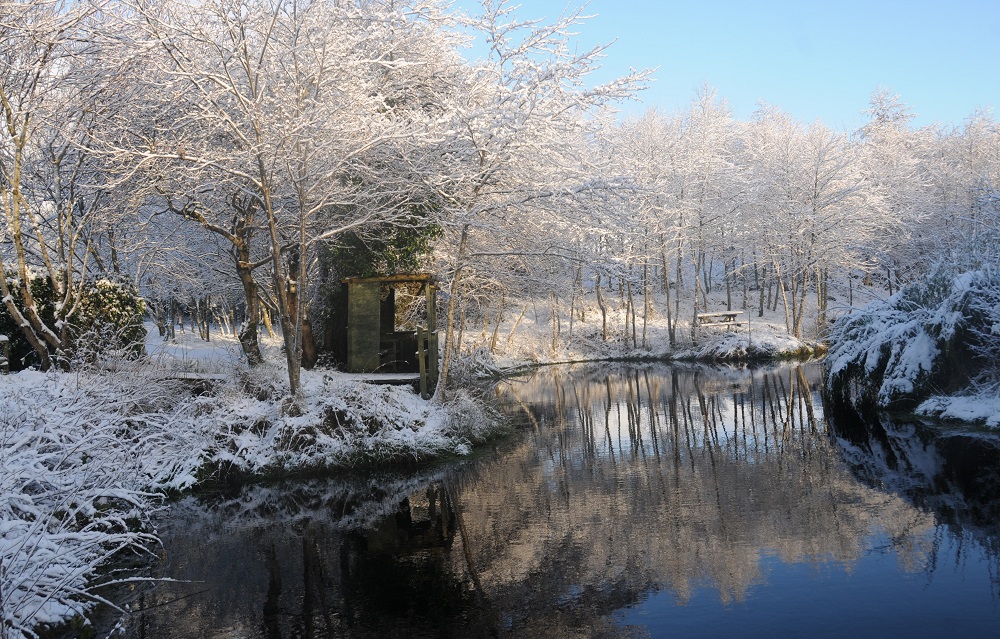
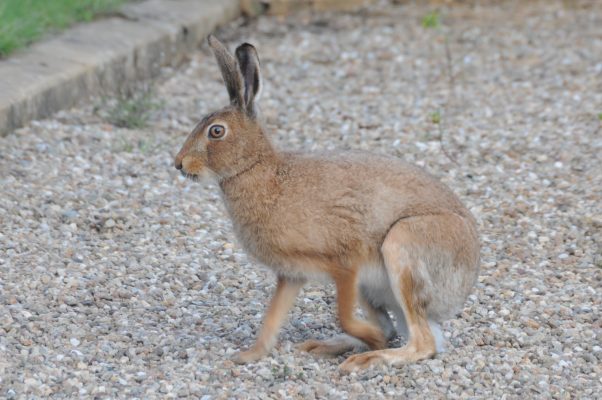
We bought 5 acres of land in Ireland fourteen years ago and found it to be a ‘rural desert’ with virtually no wildlife. My wife grew up in the area and remembered skylarks, curlew, grey partridge and butterflies and though we had little knowledge of biodiversity, no knowledge of garden design and no spare cash we decided to try to build a wildlife area to see if we could turn the clock back. Later on more land became available and the plot is now seventeen acres. We have planted 7000 native Irish trees(some with the help of the Woodland Trust) built three lakes, made a wildflower meadow and have put in some formal gardens, orchard and vegetable plot.
The positive biodiversity impact of the work
To date we have recorded 64 species of birds (not counting those simply flying over) and 12 mammals. Otters, barn owls, merlin are seen and we now attract large numbers of mallard and teal. The butterflies have returned and this season we recorded the first greater spotted woodpecker.
Local garden clubs, RSPB groups, Butterfly conservation group and other wildlife groups visit and they suggested we write up the story of the project as a book (Field of Dreams published in May by Blackstaff Press) Neighbouring farmers have been encouraged to plant more woodland and we have been regularly invited to speak to local schools.

John Tierney is a long serving member of Kilmallock TidyTowns, who is committed to improve biodiversity around the town of Kilmallock. Some of the projects that he has been involved has included-
The positive biodiversity impact of the work
The projects have all increased the level of biodiversity in Kilmallock, especially the number of native trees. This has had a positive impact on the community as a whole as it has enhanced the greenspace in the town.
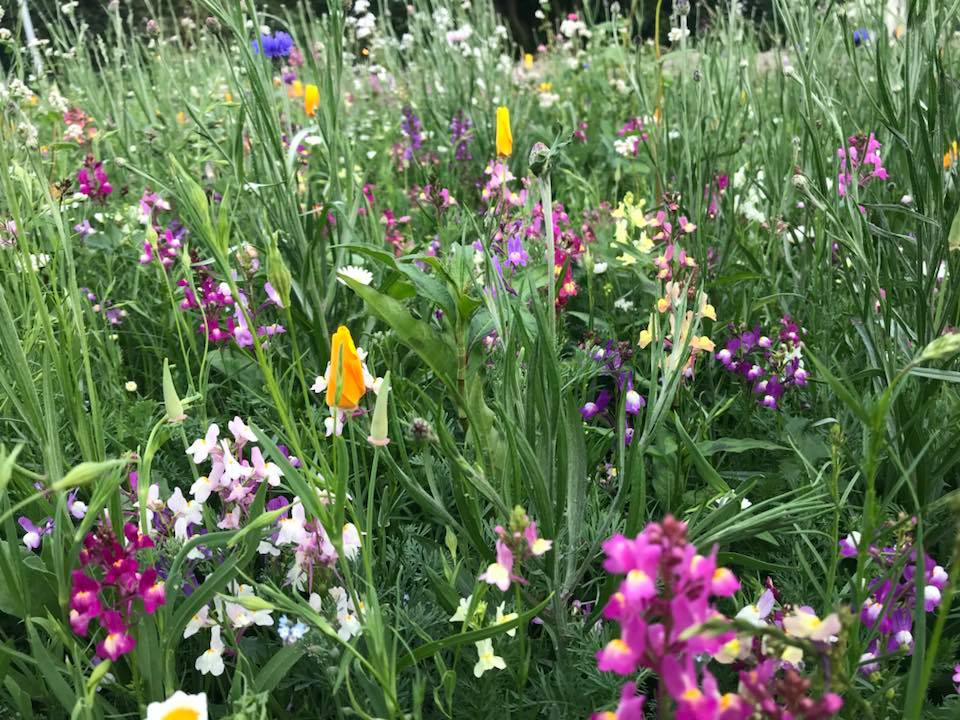

On behalf of Westport Tidy Towns Patrick took on the oversight of a project to create a wildflower garden and wildlife pond on the Newport road as well as promoting pollination and propagation projects. He is rapidly becoming our “go to person” for all information on biodiversity issues and has become the voice of conscience in Westport. He took what was previously just an area of marshy grassland with little benefit to our dwindling bees and butterflies and with the help of local volunteers he has turned it into a that hosts 21 “wild cherry” trees (out a total of 60 being planted for the Tidy Towns anniversary), which like the Dandelion are essential for our bumblebees emerging from hibernation, 50 species of wildflower seed from the locality and various transplants from CPO land. Being marshy it also has a natural wildlife pond, a much needed habitat for our frogs, newts and other aquatic species .The idea was born from the All-Ireland Pollinator plan 2015-2020 and the knowledge that in the long term, native and locally collected wildflower species are the most sustainable way to create a wildflower garden with the innate characteristic that every year it will improve with time. Sod was excavated and turned to surround the central area. Large boundary stone was taken from a nearby landfill. Wildlife ponds are a much needed habitat and there is now a natural pond on the northern end.
A central mound was made this year with stone chippings and soil, it was also forked to increase drainage and to accommodate wildflowers which were only found locally in these soil conditions. Such species include: tufted vetch, meadow vetch ling, greater birds foot, trefoil, self-heal, hedge mount wort. We also tried to grow local cowslip from seed.
The positive biodiversity impact of the work
Dormant species emerged such as redshank, silverweed. Spear thistle, smooth sow thistle, prickly sow thistle, hedge mustard, red clover, white clover, dandelion, meadow buttercup, creeping buttercup, water figwort, hog weed, meadowsweet, common chickweed, groundsel, self-heal, fat-hen, and germander speedwell.
No herbicide is being used but a tried and tested method is leaf removal and this has been found to be effective for broad-leafed dock and hopefully for creeping buttercup also.
Seeds were collected locally and, we are lucky in West Mayo to have so many wildflowers to choose from. After dehiscing the seeds are stored in paper bags over the winter. We realise that this is a long term project but we are happy to give our native wild flowers a chance to increase every year. Patrick used the wildflower garden to springboard a wildlife pond competition. As a result of running the wildlife pond competition two established ponds were identified in the same locality as the wildflower patch. In King’s Hill common frog (and tadpoles), smooth newt, leech, shrimp, daphnia are in residence and Three hedgehog hibernacula were created by making a hollow in the ground covered by natural debris. Also that it contains no non- native predators such as goldfish. It is seven years old and is adjoining semi- natural woodland Cavity nesting solitary bee area created using compacted sand. Patrick is now encouraging others to develop wildlife ponds in suitable areas.
Self -heal was found in a very short cut lawn in at the back of Boffin St. It is hoped that it can be allowed to grow a little longer this year after Patrick Fahy the Biodiversity Officer informed them of the environmental impact and benefits.
Pat noticed lots of Queen Bumblebees flying around after 5pm on April 20th.They seemed to be exploring areas either for their maps or looking for a nest site. He decided to make a nest from stone located at “our wildflower garden”.
Due South was located an elevation in the inner area to reduce the chance of flooding and as far out of the shade of the trees on the south slope as possible.
All actions will be put on the Biodiversity data centre “action for pollinators” map.
This project is sponsored by Dublin Port Company